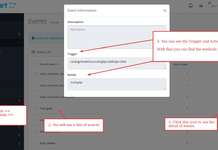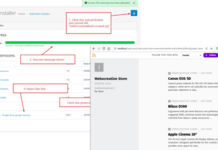In today’s digital age, user experience (UX) design has taken on a vital role in creating websites and apps that are not only functional but also attractive and easy to use. This constantly evolving field is at an exciting time, where trends and perspectives point to a future full of innovation and customization.
1. Real-time personalization:
One of the trends that will mark the future of UI UX design services is real-time personalization. Companies seek to adapt the user experience according to their preferences and behaviors in the present moment, offering content and functionalities that dynamically adjust to their specific needs.
2. Integration of AI and Machine Learning:
The integration of Artificial Intelligence (AI) and Machine Learning (Machine Learning) in UX design will allow the creation of more intuitive and predictive experiences. These technologies will facilitate the automation of repetitive tasks, real-time data analysis and advanced personalization, significantly improving the interaction between the user and the platform.
3. Inclusive and accessible design:
Another key perspective in the future of UX is the focus on inclusive and accessible design. Ensuring that all users, regardless of their abilities or limitations, can enjoy an optimal digital experience will be a priority for designers. The creation of intuitive interfaces, compatible with assistive technologies and respectful of accessibility guidelines will be essential to reach a diverse and globalized audience.
In short, user experience design is constantly evolving, adapting to new technologies and changing user demands. Staying on top of emerging trends and adopting a user-centric vision will be key to ensuring success in creating memorable and effective digital experiences.
The importance of UX design in web development
User experience (UX) design is essential in today’s web development. Next, we will explore the relevance of focusing on UX design during website creation:
1. Improves usability: Good UX design ensures that users can navigate the site efficiently and without complications. This is achieved through a clear structure, intuitive navigation, and a design that facilitates interaction.
2. Increases user satisfaction: When users find what they are looking for quickly and easily, their satisfaction increases. An attractive, functional design focused on user needs creates a positive experience that can build visitor loyalty.
3. Drives conversion: A well-thought-out UX design can influence users’ decisions and lead them to meet the site’s conversion goals, whether that’s making a purchase, subscribing to a service, or filling out a form.
4. Optimizes performance: A website with a good UX design tends to load faster, be mobile-friendly, and offer a consistent experience across different browsers, which contributes to overall page performance.
5. Generates competitive advantage: In a market where competition is fierce, having an outstanding UX design can differentiate a company from its competitors and position itself as a leader in its sector.
In short, investing in strong UX design not only improves users’ experience on a website but can also have a positive impact on business results. It is a strategic investment that can make the difference between success and stagnation in today’s digital environment.
The Importance of User Experience (UX) in Web Design
Here are some reasons why User Experience (UX) is so crucial in today’s web design:
- User retention: A good user experience keeps visitors on your website longer, which can translate into lower bounce rates and greater engagement with your content.
- Conversions: When users have a positive experience, they are more likely to make a purchase, sign up for a newsletter, or complete any other action you want them to take on your site.
- Brand reputation: Delivering an exceptional user experience can help build a positive image of your brand and generate trust among users.
- Search Engine Optimization (SEO): Search engines like Google value user experience when ranking websites. Therefore, good UX can have a positive impact on your ranking in search results.
Regarding the trends and perspectives of User Experience (UX) design, it is important to be aware of the following:
- User-centered design: More and more importance is being placed on understanding the needs and desires of users to offer them a personalized and relevant experience.
- Integration of emerging technologies: The use of artificial intelligence, augmented reality, and other technologies is transforming the way user experience is designed, opening up new possibilities and challenges.
- Accessibility: Ensuring that all users, regardless of their abilities, can access and use a website is an increasingly important aspect of UX design.
In short, investing in a well-designed user experience not only improves user satisfaction but can also have a significant impact on the success of your website. Being aware of the latest trends and perspectives in User Experience (UX) design will allow you to offer innovative and differentiating experiences that stand out in an increasingly competitive market.
The Importance of UX Objectives in Web Design
In the world of web design, User Experience Goals ( UX ) play a fundamental role in creating effective and satisfying websites for users. Next, we will detail the importance of establishing and following these objectives in the design process:
- User-centered: UX objectives focus on understanding the needs, behaviors, and expectations of end users. By being clear about these objectives, you can design a website that effectively responds to these demands.
- Improving usability: By establishing UX objectives, we seek to improve the usability of the website, facilitating user interaction with the interface. This translates into a smoother and more enjoyable experience.
- Increased user satisfaction: When a website meets UX goals, users are more satisfied finding what they are looking for quickly and easily. This increases visitor loyalty and return.
- Bounce Rate Reduction: By designing with UX goals in mind, you minimize the chance of users leaving the website quickly. An intuitive, user-centered design can reduce bounce rates and increase retention.
In summary, User Experience ( UX ) Goals are essential to achieving a successful web design that meets the needs and expectations of users. By prioritizing usability, user satisfaction, and retention, you can create a website that stands out in an increasingly competitive market.
Reflection on the future of user experience (UX) design
User experience (UX) design is a constantly evolving field that seeks to improve the interaction between users and digital products. Currently, trends and perspectives point towards a more user-centered approach, with the integration of emerging technologies and the personalization of experiences.
Key trends to watch:
- Inclusive design: Accessibility and inclusivity are fundamental aspects of UX design, ensuring that all users can interact effectively with products.
- Artificial Intelligence: AI is revolutionizing UX design, allowing the creation of more personalized and contextualized experiences for each user.
- Augmented reality: AR offers new opportunities for creating immersive and dynamic experiences, transforming the way we interact with technology.
- Adaptive design: Adaptability to different devices and contexts of use is essential in UX design, providing a consistent experience on any platform.
In conclusion, the future of user experience design is both exciting and challenging. It is essential to stay abreast of the latest trends and insights in this ever-evolving field to create meaningful and effective digital experiences. Are you ready to be part of the UI UX design services revolution?






